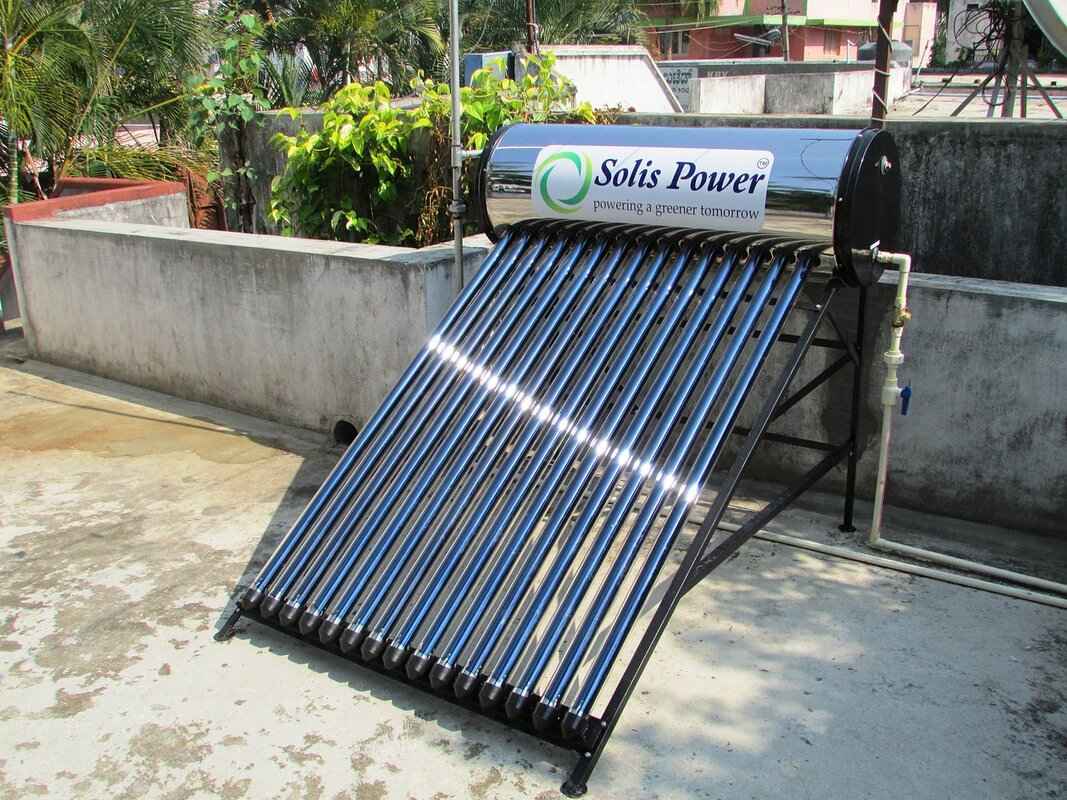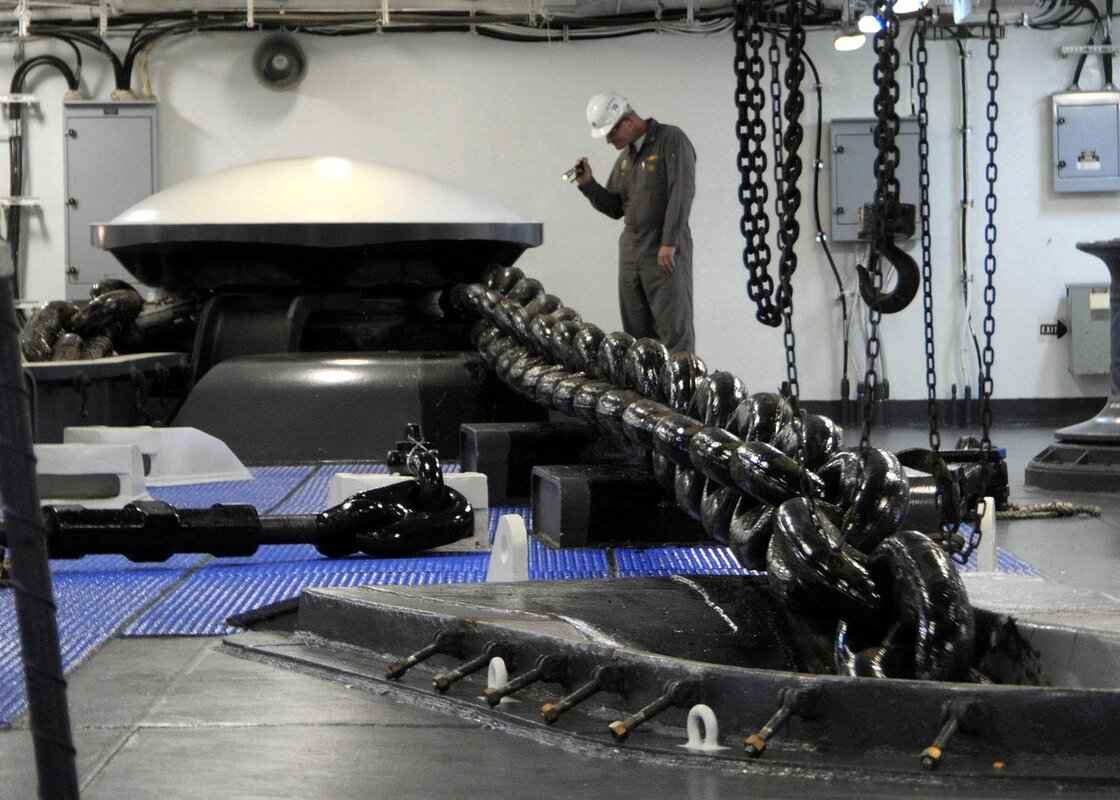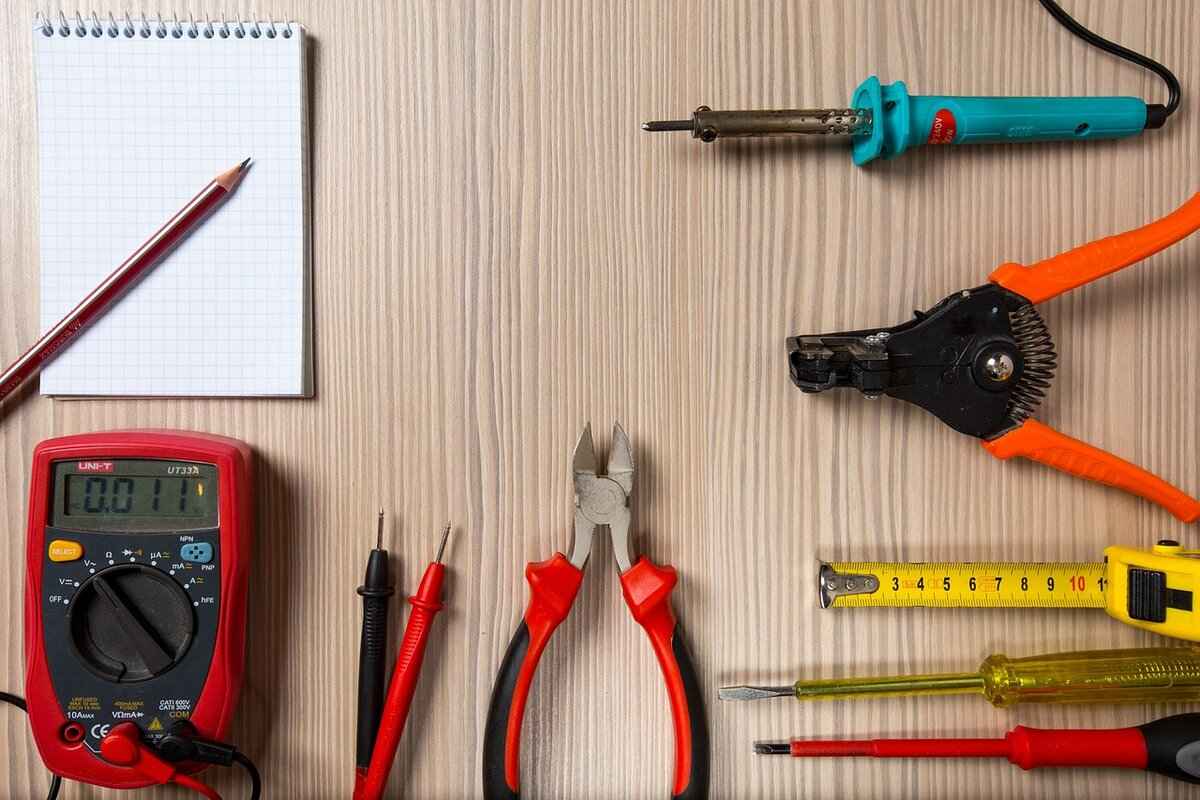This article provides a comprehensive guide on diagnosing problems with water heater elements, including common issues, troubleshooting steps, and maintenance tips to ensure optimal performance.
Understanding Water Heater Elements
Water heater elements are crucial components that heat water in electric water heaters. These elements function by converting electrical energy into heat, which is then transferred to the water in the tank. Understanding their operation is vital for identifying potential issues that may arise over time, such as element burnout or sediment buildup.
Common Signs of a Faulty Water Heater Element
Recognizing the signs of a failing water heater element is essential for timely intervention. Here are some typical symptoms that indicate an element may need inspection or replacement:
- Insufficient Hot Water: If your water heater is unable to provide enough hot water for your needs, it could be a sign of a faulty element.
- Temperature Fluctuations: Experiencing inconsistent water temperatures can indicate a problem with the heating element.
- Strange Noises: Unusual sounds, such as popping or rumbling, may suggest sediment buildup around the heating elements, impacting efficiency.
- Water Discoloration: Discolored water can indicate corrosion within the unit, potentially signaling a deteriorating heating element.
Tools Needed for Inspection
Before checking the water heater element, it’s important to gather the right tools. Essential items include:
- Multimeter: This tool is crucial for testing the electrical continuity of the heating elements.
- Screwdriver and Wrench: Basic hand tools are necessary for accessing the heating elements safely.
Step-by-Step Guide to Inspecting Water Heater Elements
Following a systematic approach can help identify issues effectively. Here’s a detailed, step-by-step guide:
- Turn Off Power Supply: Always ensure the power supply to the water heater is turned off to prevent electrical hazards.
- Remove Access Panels: Most water heaters have protective access panels. Carefully remove these to inspect the elements.
Testing the Heating Elements
Testing the heating elements is critical for diagnosing issues. Here’s how to perform the tests:
- Continuity Test: Use a multimeter to check for electrical continuity in the heating element. A lack of continuity indicates a faulty element.
- Resistance Measurement: Measuring resistance can reveal the health of the element. Normal readings should fall within a specific range; deviations suggest replacement is necessary.
Common Issues and Solutions
Understanding common problems can aid in troubleshooting. Here are some typical issues and their solutions:
- Burnt Out Elements: If the continuity test shows no connection, replacing the element is necessary to restore hot water supply.
- Corrosion and Sediment Buildup: Regular maintenance, including tank flushing, can mitigate these issues and prolong the life of the elements.
Preventive Maintenance Tips
Preventive maintenance is vital for ensuring the longevity of water heater elements. Here are practical tips:
- Regular Flushing: Periodically flushing the water heater helps eliminate sediment buildup that can damage elements.
- Temperature Settings: Maintain appropriate temperature settings to prevent overheating and extend the life of the heating elements.
When to Call a Professional
While many issues can be resolved through DIY methods, certain situations require professional help. Consider consulting a licensed electrician or plumber if you encounter complex electrical problems or if you are unsure about replacing heating elements.

Understanding Water Heater Elements
Water heaters are essential appliances in many households, providing hot water for various needs such as bathing, cooking, and cleaning. At the heart of electric water heaters are the heating elements, which play a crucial role in the water heating process. Understanding how these elements work and their significance can aid homeowners in diagnosing potential issues that may arise over time.
The heating elements in electric water heaters are typically made of metal and are responsible for transferring heat to the water inside the tank. These elements operate using electrical resistance; when electricity flows through them, they generate heat, which is then transferred to the surrounding water. Most electric water heaters are equipped with two elements: an upper element and a lower element. The upper element heats the water at the top of the tank, while the lower element heats the water at the bottom, ensuring that the entire tank is filled with hot water.
Over time, heating elements can experience wear and tear due to various factors, including mineral buildup, corrosion, and electrical issues. Understanding the function of these components can help homeowners identify symptoms of failure early, allowing for timely repairs or replacements. Regular maintenance and monitoring can significantly extend the lifespan of heating elements and improve the efficiency of the water heater.
Recognizing the signs of a failing water heater element is crucial for maintaining a reliable hot water supply. Common indicators include:
- Insufficient Hot Water: If you notice that your water heater is not providing enough hot water, it may be a sign that one of the heating elements has failed.
- Temperature Fluctuations: Sudden changes in water temperature can indicate a malfunctioning heating element. If the water temperature varies widely, it may be time to inspect the elements.
- Strange Noises: Unusual sounds, such as popping or rumbling, can suggest sediment buildup around the heating elements, which can lead to inefficiency and eventual failure.
- Water Discoloration: If your hot water appears rusty or discolored, it may indicate corrosion within the water heater, potentially affecting the heating elements.
Before inspecting the water heater elements, it is essential to gather the right tools to ensure a safe and effective examination. Here are some necessary tools:
- Multimeter: This tool is vital for testing the electrical continuity of the heating elements, helping to determine if they are functioning correctly.
- Screwdriver and Wrench: Basic hand tools like screwdrivers and wrenches are needed to access the heating elements by removing protective panels.
Inspecting water heater elements can be done safely and efficiently by following these steps:
- Turn Off Power Supply: Always prioritize safety by turning off the power to the water heater before beginning any inspection.
- Remove Access Panels: Use a screwdriver to carefully remove the access panels that cover the heating elements, allowing for a direct inspection.
- Perform a Continuity Test: Using the multimeter, check for electrical continuity in each heating element. If there is no continuity, the element may need replacement.
- Check for Sediment Buildup: Inspect the area around the elements for any signs of sediment accumulation, which can hinder performance.
To maintain the efficiency and longevity of your water heater elements, consider the following preventive maintenance tips:
- Regular Flushing: Periodically flushing the water heater can help remove sediment buildup, prolonging the life of the heating elements.
- Monitor Temperature Settings: Keeping the thermostat at a safe and appropriate level can prevent overheating and reduce wear on the heating elements.
While many issues can be resolved through DIY methods, some situations may require professional assistance. If you encounter complex electrical problems or are unsure about replacing heating elements, it’s advisable to consult a licensed electrician or plumber to ensure the job is done safely and correctly.

Common Signs of a Faulty Water Heater Element
Recognizing the signs of a failing water heater element is essential for maintaining a reliable hot water supply. Water heater elements are crucial components that heat the water in electric water heaters. Over time, these elements can experience wear and tear, leading to various issues. Below are some typical symptoms that indicate an element may need inspection or replacement.
- Insufficient Hot Water: One of the most prevalent signs of a failing water heater element is the inability to produce sufficient hot water. If you notice that your hot water supply runs out quickly or doesn’t reach the desired temperature, it may be time to inspect the heating elements. This could be due to a burnt-out element or one that is malfunctioning.
- Temperature Fluctuations: If the water temperature varies significantly, this could indicate an issue with the heating element. You might experience hot water one moment and lukewarm water the next. Such fluctuations can be frustrating and may signal that the element is not functioning properly.
- Strange Noises: Unusual sounds, such as popping, rumbling, or hissing, can indicate sediment buildup around the heating elements. This buildup can lead to inefficiency and, eventually, element failure. If you hear these noises, it’s advisable to inspect the tank and elements.
- Water Discoloration: If you notice rust-colored or cloudy water, it could be a sign of corrosion within the water heater. This corrosion can affect the heating elements and may suggest that they need to be assessed for replacement.
- Leaking Water Heater: A leaking water heater can be a sign of a failing element or other issues. If you find water pooling around the base of your heater, it is crucial to investigate further to prevent damage and ensure safety.
- Increased Energy Bills: If you notice a sudden spike in your energy bills, it could be due to a malfunctioning heating element that is working harder to heat the water. This inefficiency not only costs you more but can also lead to further damage to the water heater.
In summary, being aware of these signs can help you address water heater element issues before they escalate into more significant problems. Regular maintenance and timely inspections can prolong the life of your water heater and ensure a consistent supply of hot water. If you notice any of these symptoms, it’s wise to consult a professional for a thorough inspection and potential replacement of the heating elements.
Insufficient Hot Water
Experiencing is a common concern for many homeowners. When your water heater fails to provide the expected amount of hot water, it can disrupt daily routines and lead to frustration. Understanding the underlying causes of this issue is essential for effective troubleshooting and resolution.
One of the primary reasons for is a malfunctioning heating element. In electric water heaters, these elements are responsible for heating the water within the tank. If one or both elements fail, the heater cannot maintain the desired temperature, resulting in lukewarm or cold water. This failure can occur due to various reasons, including:
- Burnt-Out Elements: Over time, heating elements can burn out due to prolonged use or manufacturing defects. When this happens, the element needs to be replaced to restore hot water supply.
- Corrosion: Corrosion can occur in the heating element due to the presence of minerals in the water. This deterioration can hinder the element’s ability to heat water effectively.
- Electrical Issues: Problems with the electrical connections or the thermostat can also lead to insufficient hot water. If the thermostat is malfunctioning, it may not signal the heating element to activate when needed.
To diagnose the issue of , homeowners can take several steps:
- Check the Thermostat: Ensure that the thermostat is set to an appropriate temperature, typically between 120°F and 140°F. If it is set too low, the water may not reach the desired temperature.
- Inspect the Heating Elements: Use a multimeter to test the heating elements for continuity. If there is no continuity, the element is likely burnt out and needs replacement.
- Look for Sediment Buildup: Sediment can accumulate in the tank and around the heating elements, insulating them and reducing their efficiency. Regular flushing of the tank can help prevent this issue.
If troubleshooting does not resolve the issue, it may be time to consult a professional. An experienced technician can conduct a thorough inspection and identify any underlying problems with the water heater.
In conclusion, understanding the causes of is crucial for maintaining a functional water heater. Regular maintenance and timely inspections can help prevent issues, ensuring that your water heater operates efficiently and provides the hot water you need.
Temperature Fluctuations
Temperature fluctuations in your water heater can be a significant indicator of underlying issues that need immediate attention. When the water temperature varies unexpectedly, it can lead to discomfort and inefficiency in your home. Understanding the causes of these fluctuations is crucial for maintaining an effective heating system.
Temperature fluctuations can arise from several factors, primarily related to the heating elements and the overall system performance. Some common causes include:
- Faulty Heating Elements: If one of the heating elements is malfunctioning, it may not heat the water adequately, leading to inconsistent temperatures.
- Thermostat Issues: A malfunctioning thermostat may not accurately read the water temperature, causing the heater to operate erratically.
- Sediment Buildup: Over time, sediment can accumulate at the bottom of the tank, insulating the heating element and reducing its efficiency.
- Electrical Problems: Wiring issues or circuit problems can disrupt the power supply to the heating elements, resulting in temperature inconsistencies.
Recognizing the signs of temperature fluctuations is essential for timely intervention. Here are some indicators to watch for:
- Inconsistent Hot Water Supply: If you notice that the hot water supply is inconsistent, with sudden changes from hot to cold, it’s a clear sign of potential issues.
- Frequent Temperature Adjustments: If you find yourself constantly adjusting the thermostat to achieve a comfortable temperature, this may indicate a malfunction.
- Hot Water Scalding: Sudden bursts of excessively hot water can be dangerous and indicate a serious problem with the heating elements or thermostat.
If you suspect that your water heater is experiencing temperature fluctuations, follow these troubleshooting steps:
1. Turn off the power supply to the water heater.2. Inspect the thermostat settings to ensure they are correctly set.3. Remove the access panels to examine the heating elements for visible damage or corrosion.4. Use a multimeter to test the continuity of the heating elements.5. Check for sediment buildup and consider flushing the tank if necessary.
While some troubleshooting can be done independently, there are situations where professional assistance is necessary. If you encounter:
- Complex Electrical Issues: If you are not comfortable working with electrical components, it’s best to call a licensed electrician.
- Severe Sediment Buildup: If flushing the tank does not resolve the issue, a professional can provide a thorough cleaning.
- Replacement of Heating Elements: If you determine that the heating elements need replacement, hiring a professional ensures the job is done safely and correctly.
Addressing temperature fluctuations promptly can help maintain the efficiency of your water heater and ensure a consistent hot water supply. Regular maintenance and awareness of the signs can prevent further complications and enhance the longevity of your heating system.
Strange Noises
Strange noises emanating from your water heater can be a cause for concern. These unusual sounds, such as popping, rumbling, or hissing, can indicate underlying issues that may affect the performance and longevity of your water heater. It is essential to understand what these noises mean and how to address them effectively.
One of the most common reasons for these sounds is sediment buildup around the heating elements. Over time, minerals and debris in the water can settle at the bottom of the tank, creating a layer of sediment. When the heating elements operate, they can cause the trapped water beneath the sediment to heat up and create steam bubbles. As these bubbles rise and burst through the sediment, they produce a popping or rumbling noise. This not only leads to inefficiency in heating but can also cause potential damage to the heating elements if left unaddressed.
Another factor contributing to strange noises is the age of the water heater. Older units may experience wear and tear, leading to various issues, including noise. Components may become loose, or the insulation may degrade, resulting in rattling or banging sounds. Regular maintenance can help identify these problems early on, ensuring your water heater operates smoothly.
It is also worth noting that changes in water pressure can lead to unusual noises. If the water pressure is too high, it may cause the pipes to vibrate, leading to a banging sound known as “water hammer.” This can be particularly concerning as it may indicate that your plumbing system requires adjustments.
To address these strange noises, consider the following steps:
- Flush the Tank: Regularly flushing your water heater can help remove sediment buildup. This process involves draining the tank and rinsing it out to ensure that any accumulated minerals are removed.
- Inspect the Heating Elements: If noises persist, inspect the heating elements for signs of damage or corrosion. If they appear worn, it may be time for a replacement.
- Check Water Pressure: Ensure that your home’s water pressure is within the recommended range. If it is too high, consider installing a pressure-reducing valve.
In some cases, if the noises continue despite taking these measures, it might be time to consult a professional. A licensed plumber can diagnose the issue more thoroughly and provide appropriate solutions. Ignoring strange noises can lead to more significant problems, including decreased efficiency and potential failure of the water heater.
In conclusion, understanding the reasons behind strange noises from your water heater is crucial for maintaining its performance. Regular maintenance, timely inspections, and addressing any underlying issues can help ensure a quiet and efficient water heating system.
Water Discoloration
Water discoloration is a common issue that many homeowners encounter, and it can be a significant indicator of underlying problems within your water heater system. When you notice that your tap water has taken on a brown, yellow, or even reddish hue, it’s crucial to understand the potential causes and implications of this discoloration.
- Corrosion of Pipes: One of the primary reasons for discolored water is the corrosion of pipes. Over time, metal pipes can corrode, leading to rust particles being released into the water supply. This is particularly common in older homes with aging plumbing systems.
- Water Heater Issues: Discolored water can also suggest that your water heater is experiencing problems. If the heating element is deteriorating, it may lead to rust and sediment buildup, which can affect the quality of your water.
- Mineral Content: High levels of minerals such as iron and manganese can also contribute to water discoloration. These minerals can leach into the water supply, especially if there are changes in water pressure or flow.
- Contamination: In some cases, discolored water may indicate contamination from external sources, such as floodwater or soil. This can pose serious health risks, making it essential to address the issue promptly.
When faced with discolored water, it’s vital to take immediate action. Here are some steps to consider:
1. Stop using the water: If you notice discoloration, avoid using the water for drinking, cooking, or bathing until the issue is resolved.2. Inspect your plumbing: Check for any visible signs of corrosion or leaks in your pipes that could be contributing to the problem.3. Flush your water heater: Sediment buildup in your water heater can lead to discoloration. Flushing the tank can help remove these deposits.4. Contact a professional: If the problem persists, it’s advisable to consult a licensed plumber or water treatment specialist to diagnose and resolve the issue effectively.
Taking these steps can help ensure that your water remains safe and clean. Regular maintenance of your water heater and plumbing system is crucial to prevent issues like discoloration from arising in the first place.
In conclusion, while water discoloration may seem like a minor inconvenience, it can often signal more severe issues within your plumbing or water heating systems. By understanding the causes and taking appropriate action, homeowners can safeguard their water quality and maintain a healthy home environment.

Tools Needed for Inspection
Before diving into the inspection process for your water heater element, it is essential to gather the right tools. Having the appropriate equipment not only ensures safety but also enhances the efficiency of the inspection. Below, we outline the necessary tools you will need to effectively inspect and test the heating elements of your water heater.
- Multimeter: A multimeter is an indispensable tool for anyone inspecting a water heater. It allows you to measure voltage, current, and resistance, which are crucial for determining whether the heating elements are functioning correctly. By performing continuity tests, you can identify burnt-out elements that need replacement.
- Screwdrivers: A set of screwdrivers, including both flathead and Phillips, is required to remove access panels and screws. This will enable you to reach the heating elements safely and without damaging the unit.
- Wrench Set: A wrench set, particularly adjustable wrenches, is necessary for loosening and tightening the nuts that secure the heating elements in place. This tool is essential for both installation and removal processes.
- Voltage Tester: A voltage tester is a safety tool that helps ensure there is no electrical current flowing to the water heater before you begin your inspection. This is a critical step to avoid electrocution.
- Insulated Gloves: Wearing insulated gloves is vital for safety when working with electrical components. They provide an extra layer of protection against accidental shocks.
- Bucket: A bucket is useful for catching any water that may spill out when you remove the heating elements. This can help keep your workspace clean and prevent water damage.
- Towel or Rag: Having a towel or rag on hand can help you clean up any spills and keep your tools dry while you work.
Equipped with these tools, you will be well-prepared to inspect your water heater elements thoroughly. Remember that safety should always come first; ensure the power supply is turned off before beginning any inspection work. Proper tools not only facilitate a smoother inspection process but also contribute to a more accurate diagnosis of any issues with your water heater.
In addition to the tools listed above, familiarizing yourself with the specific model of your water heater can provide insights into any unique requirements or considerations during the inspection process. Always refer to the manufacturer’s manual for guidance on accessing and testing the heating elements.
By ensuring you have the right tools and knowledge, you can effectively diagnose issues with your water heater elements, leading to timely repairs and optimal performance.
Multimeter
A multimeter is an essential tool for anyone looking to diagnose and troubleshoot issues with electrical appliances, particularly water heaters. This versatile device can measure voltage, current, and resistance, making it invaluable for checking the functionality of heating elements in water heaters. Understanding how to use a multimeter effectively can save both time and money when it comes to maintaining your home’s hot water supply.
What is a Multimeter?
A multimeter, also known as a volt/ohm meter or a multitester, is a device that combines multiple measurement functions into one unit. It is capable of measuring:
- Voltage: This is the electrical potential difference and is measured in volts (V).
- Current: This refers to the flow of electric charge and is measured in amperes (A).
- Resistance: This indicates how much a material opposes the flow of electric current, measured in ohms (Ω).
Importance of Testing Heating Elements
Testing the heating elements in a water heater is critical for ensuring efficient operation. If the elements are faulty, they can lead to insufficient hot water, higher energy bills, and potential damage to the appliance. A multimeter allows homeowners to quickly assess whether the heating elements are functioning as they should.
How to Use a Multimeter for Testing Heating Elements
To effectively test the heating elements of your water heater using a multimeter, follow these steps:
- Turn Off Power: Safety is crucial. Always ensure that the power supply to the water heater is turned off before beginning any tests.
- Set Up the Multimeter: Set your multimeter to the resistance (Ω) setting to test for continuity.
- Access the Heating Elements: Remove the access panels on your water heater to expose the heating elements.
- Test for Continuity: Place the multimeter probes on the terminals of the heating element. A reading of zero or very low resistance indicates that the element is functional. If the meter shows infinite resistance, the element is likely burnt out and needs replacement.
Understanding Multimeter Readings
Interpreting the readings from your multimeter is crucial. A normal heating element should show a resistance reading typically between 10 to 30 ohms. If your readings fall outside this range, it is advisable to consider replacing the heating element. Additionally, if the multimeter indicates no continuity, it confirms that the element is not working and must be addressed immediately.
Regular Maintenance and Testing
Incorporating regular tests with a multimeter into your water heater maintenance routine can help identify issues before they escalate. By checking the heating elements periodically, homeowners can ensure their water heater operates efficiently, saving energy and reducing costs.
In conclusion, a multimeter is an indispensable tool for testing the electrical continuity of heating elements in water heaters. By understanding how to use this device effectively, you can determine whether your heating elements are functioning properly or if they require replacement. Regular testing can lead to improved performance and longevity of your water heater, providing you with reliable hot water when you need it most.
Screwdriver and Wrench
When it comes to maintaining and inspecting your water heater, having the right tools on hand is essential. Among these tools, screwdrivers and wrenches stand out as fundamental components that facilitate access to the heating elements. These basic tools not only simplify the process but also enhance safety and efficiency during inspections.
Screwdrivers are typically used to remove screws that secure access panels on water heaters. These panels protect the internal components from dust and debris while allowing for necessary maintenance. Using the correct type of screwdriver—whether flathead or Phillips—is crucial to avoid stripping the screws, which can complicate future access. A well-maintained screwdriver also ensures that you can apply the right amount of torque without damaging the screws or the panel itself.
Wrenches, on the other hand, are essential for loosening and tightening nuts and bolts that may be present in the assembly of the heating elements. Depending on the design of your water heater, you may encounter different sizes of nuts, making it important to have an adjustable wrench or a set of socket wrenches. Using the right wrench not only makes it easier to perform adjustments but also helps prevent damage to the fittings.
- Efficiency: The right tools speed up the inspection process, allowing you to quickly identify any issues with the heating elements.
- Safety: Proper tools reduce the risk of accidents, such as slipping and injuring yourself or damaging the water heater.
- Accessibility: Having screwdrivers and wrenches readily available allows you to access the internal components without unnecessary delays.
Before starting your inspection, it’s advisable to gather all necessary tools, including a multimeter for electrical testing, alongside your screwdrivers and wrenches. This preparation ensures that you can address any issues that may arise during the inspection process without needing to interrupt your work to find additional tools.
In conclusion, investing in quality screwdrivers and wrenches can significantly improve your experience when inspecting water heater elements. These tools not only make the process more efficient but also help maintain the integrity of your water heater, ultimately contributing to its longevity and performance. Remember, a well-equipped toolbox is the first step toward effective maintenance and troubleshooting.

Step-by-Step Guide to Inspecting Water Heater Elements
Inspecting water heater elements is a vital task for maintaining the efficiency and safety of your heating system. By following a systematic approach, you can effectively identify any issues that may arise. This guide provides a detailed, step-by-step process to help you inspect your water heater elements thoroughly.
1. Gather Necessary Tools
- Multimeter: Essential for testing the electrical continuity of the heating elements.
- Screwdriver: Required for removing access panels to reach the elements.
- Wrench: Used for loosening or tightening connections as needed.
2. Ensure Safety First
Before beginning any inspection, it is crucial to prioritize safety. Start by turning off the power supply to the water heater. This can typically be done at the circuit breaker, ensuring that no electricity is flowing to the unit while you work.
3. Remove the Access Panels
Most electric water heaters have access panels that protect the heating elements. Carefully remove these panels using your screwdriver. Make sure to keep the screws in a safe place to avoid losing them during reassembly.
4. Visually Inspect the Elements
Once the access panels are removed, visually inspect the heating elements for any signs of damage, such as corrosion, discoloration, or physical wear. Look for any sediment buildup around the elements, which can affect their performance.
5. Perform a Continuity Test
Using your multimeter, set it to the resistance setting and check the continuity of each heating element. To do this, touch one probe to each terminal of the element. A reading of zero or close to it indicates that the element is functioning correctly, while an infinite reading suggests a broken element that needs replacement.
6. Measure Resistance
Next, measure the resistance of the heating element. Normal readings typically fall between 10 to 20 ohms, depending on the specific model. If the resistance is significantly higher or lower than this range, it may indicate that the element is faulty and should be replaced.
7. Check for Sediment Buildup
If you notice sediment buildup around the heating elements, it is essential to address this issue. Sediment can insulate the heating elements, causing them to overheat and fail. Consider flushing the tank to remove sediment and improve efficiency.
8. Reassemble and Test the Water Heater
After completing your inspection and any necessary tests, reassemble the access panels securely. Turn the power supply back on and allow the water heater to heat up. Monitor its performance to ensure that it operates efficiently.
9. Regular Maintenance
To prevent future issues, it is advisable to conduct regular maintenance checks on your water heater elements. This can include periodic inspections, flushing the tank, and ensuring that the temperature settings are optimal.
By following this step-by-step guide, you can effectively inspect your water heater elements, identify any potential issues, and maintain the efficiency of your water heating system. Regular inspections not only extend the lifespan of your unit but also ensure that you have a reliable supply of hot water when you need it.
Turn Off Power Supply
When dealing with electrical appliances, particularly water heaters, safety should always be your top priority. Before embarking on any inspection or maintenance task, it is crucial to ensure that the power supply is completely turned off. This precaution is not merely a suggestion; it is a fundamental step that protects you from potential electrical hazards.
Before you begin inspecting your water heater, turning off the power supply is essential. This action not only safeguards you from electric shock but also prevents any accidental activation of the heating elements while you are working. Here are some important steps to follow:
- Locate the Circuit Breaker: The first step is to find the circuit breaker panel in your home. This panel contains switches that control the electrical supply to different areas and appliances.
- Identify the Correct Breaker: Look for the breaker that corresponds to your water heater. It is often labeled, but if you’re unsure, it may be helpful to consult your home’s electrical diagram or manual.
- Switch Off the Power: Once you have identified the correct breaker, flip the switch to the ‘off’ position. This will cut the electricity supply to the water heater.
- Verify Power is Off: To ensure that the power is indeed off, you can use a non-contact voltage tester. This tool will alert you if any electrical current is present in the system.
By following these steps, you can create a safe working environment. Additionally, always remember to allow the water heater to cool down before starting any inspection, as the components can remain hot even after the power is turned off.
Taking the time to ensure safety not only protects you but also extends the lifespan of your water heater. Regular maintenance checks, performed with caution, can help identify potential issues early on, preventing costly repairs in the future. Moreover, if at any point you feel uncertain about handling electrical components, do not hesitate to contact a professional. They possess the expertise and tools necessary to safely manage any repairs or inspections.
In summary, turning off the power supply is a critical step when inspecting or maintaining your water heater. It sets the foundation for a safe and efficient inspection process, allowing you to focus on diagnosing any issues without the worry of electrical hazards.
Remove Access Panels
Removing access panels is a crucial step in inspecting the heating elements of your water heater. These panels serve as protective barriers that shield the elements from dirt, moisture, and accidental damage. When you need to check for issues, it’s essential to follow a systematic approach to ensure safety and effectiveness.
- Identifying the Panels: Most water heaters are equipped with two access panels, typically located on the side or front of the unit. These panels are often held in place by screws, which may require a screwdriver for removal.
- Safety First: Before proceeding to remove the panels, it is imperative to turn off the power supply to the water heater. This can usually be done at the circuit breaker. Working with electrical components while the power is on poses serious safety risks.
- Removing the Screws: Using a screwdriver, carefully remove the screws holding the access panels in place. Keep these screws in a safe location to prevent loss. Gently lift the panels away from the unit, exposing the heating elements.
- Inspecting the Elements: With the panels removed, visually inspect the heating elements for any signs of damage, corrosion, or sediment buildup. Look for discoloration or burnt areas, which may indicate a malfunction. If you notice any issues, further testing may be required.
- Cleaning the Area: While you have the access panels removed, it’s a good opportunity to clean the area around the heating elements. Dust and debris can accumulate over time, affecting the performance of the water heater. A clean environment can lead to better efficiency.
- Reattaching the Panels: Once your inspection is complete and any necessary maintenance has been performed, carefully reattach the access panels. Ensure that they fit snugly and that all screws are tightened securely to maintain the unit’s integrity.
Why is it Important to Remove Access Panels?Removing the access panels allows homeowners or technicians to directly inspect the heating elements, which are critical for the operation of the water heater. Regular checks can help identify problems early, preventing costly repairs or replacements down the line. Moreover, maintaining the heating elements can significantly enhance the efficiency of the water heater, ensuring that it operates at optimal performance.
Common Issues Found During InspectionDuring the inspection of the heating elements, you may encounter several common issues. These include:
- Burnt Elements: If the heating element appears blackened or has a burnt smell, it may need to be replaced.
- Corrosion: Signs of rust or corrosion around the heating elements can indicate water quality issues or age-related deterioration.
- Sediment Buildup: Hard water can lead to sediment accumulation, which can insulate the heating elements and reduce efficiency.
By understanding the importance of removing access panels and knowing what to look for, you can effectively manage your water heater’s maintenance. Regular inspections not only prolong the life of the heating elements but also ensure that you have a reliable supply of hot water when you need it most.

Testing the Heating Elements
When it comes to maintaining the efficiency and safety of your water heater, is an essential step. This process not only helps diagnose existing issues but also prevents future complications. By understanding how to perform these tests, homeowners can ensure their heating elements are functioning correctly, which is vital for maintaining a consistent supply of hot water.
Heating elements are responsible for warming the water in electric water heaters. If these components fail, it can lead to various issues, including insufficient hot water, temperature fluctuations, and even complete system failure. Regular testing can help identify problems early, allowing for timely repairs or replacements.
A continuity test is a straightforward method to check if the heating element is functioning properly. To perform this test:
- Gather Your Tools: You will need a multimeter and safety gear.
- Ensure Safety: Always turn off the power supply to the water heater before beginning any tests.
- Access the Heating Element: Remove the access panels to reach the heating elements.
- Set Your Multimeter: Switch your multimeter to the continuity setting.
- Test the Element: Touch one probe to each terminal of the heating element. A beep or a reading on the multimeter indicates continuity.
If there is no continuity, this indicates that the heating element is faulty and needs to be replaced.
In addition to continuity testing, measuring the resistance of the heating element provides insights into its condition. Follow these steps:
- Set the Multimeter: Change the setting to measure resistance (ohms).
- Disconnect Power: Ensure the power is off and the wires are disconnected from the element.
- Measure Resistance: Place the multimeter probes on the terminals of the element. A normal reading typically falls between 10 to 30 ohms.
Readings outside this range may indicate a problem, such as a short circuit or a burnt-out element, necessitating replacement.
Regular testing can help identify common problems associated with heating elements. Some issues to look out for include:
- Burnt Out Elements: If the continuity test shows no connection, it’s likely that the element has burnt out.
- Corrosion: Signs of corrosion on the terminals can indicate that the element is deteriorating and may need replacement.
- Sediment Buildup: If you hear strange noises or notice inefficiency, sediment buildup may be causing the heating element to work harder than necessary.
Testing the heating elements of your water heater is a critical maintenance task that can save time, money, and ensure the safety of your home. By performing continuity tests and measuring resistance, you can diagnose potential issues early, ensuring that your water heater operates efficiently.
Continuity Test
A is an essential diagnostic procedure used to assess whether a water heater’s heating element is functioning correctly. This test is vital for maintaining the efficiency of your water heater and ensuring you have a reliable supply of hot water. By utilizing a multimeter, homeowners can effectively check for an electrical connection within the heating element, which is crucial for its operation.
To begin, it is important to understand that the heating element consists of a metal coil that heats up when electricity passes through it. If this element is damaged or burnt out, it will not create the necessary heat, leading to insufficient hot water or complete failure of the water heater. Conducting a continuity test allows you to identify whether the element is intact or if it needs replacement.
Here’s how to perform a continuity test:
- Step 1: Safety First – Before beginning any electrical work, ensure that the power supply to the water heater is turned off. This precaution helps prevent any electrical shock or injury.
- Step 2: Gather Your Tools – You will need a multimeter, which can measure resistance and continuity. Make sure it is set to the continuity setting, often indicated by a sound wave symbol.
- Step 3: Access the Heating Element – Remove the access panels on your water heater to expose the heating elements. This may require a screwdriver or wrench.
- Step 4: Disconnect Wires – Carefully disconnect the wires attached to the heating element. This step is crucial to ensure you are testing the element itself and not the entire circuit.
- Step 5: Conduct the Test – Place the multimeter probes on the terminals of the heating element. If the multimeter beeps or shows a reading near zero ohms, it indicates continuity, meaning the element is functioning properly. If there is no sound or the reading is infinite, the element is likely burnt out and needs replacement.
Performing a continuity test not only helps in diagnosing issues but also contributes to the overall maintenance of your water heater. Regular testing can help prevent unexpected failures and ensure that any potential issues are addressed before they escalate into more significant problems.
In addition to the continuity test, it is advisable to check for signs of wear and tear, such as corrosion or sediment buildup around the heating element. These factors can impact the efficiency of the heating element and the water heater as a whole. By integrating regular inspections and continuity tests into your maintenance routine, you can extend the lifespan of your water heater and enhance its performance.
In summary, a continuity test is a straightforward yet vital process for ensuring the proper functioning of your water heater’s heating element. By following the steps outlined above, you can quickly determine the health of your heating element and take appropriate action if necessary.
Resistance Measurement
Measuring the resistance of the heating element is a crucial diagnostic step in assessing the health of your water heater. By understanding how to accurately measure resistance, you can identify potential issues before they escalate into significant problems.
What is Resistance Measurement? Resistance measurement involves using a multimeter to determine how much electrical resistance is present in the heating element. This measurement is essential because it provides insight into the element’s functionality. A normal resistance reading typically falls within a specific range, often between 10 to 30 ohms for most heating elements. If the reading deviates from this range, it may indicate that the element is faulty and requires replacement.
Why is Resistance Important?The resistance of a heating element directly affects its ability to generate heat. If the resistance is too high, it may suggest that the element is corroded or damaged. Conversely, if the resistance is too low, it could indicate a short circuit within the element. Both scenarios can lead to insufficient heating, increased energy consumption, or complete element failure. Therefore, understanding and measuring resistance is vital for maintaining an efficient water heater.
How to Measure ResistanceTo measure the resistance of your water heater element, follow these steps:
- Turn Off Power: Always ensure the power supply to the water heater is turned off to prevent any electrical hazards.
- Access the Elements: Remove the access panels to expose the heating elements. This may require a screwdriver or wrench.
- Disconnect Wires: Carefully disconnect the wires from the heating element terminals to ensure accurate readings.
- Set Up the Multimeter: Set your multimeter to the ohm setting. This is typically indicated by the symbol “Ω”.
- Measure Resistance: Place the multimeter probes on the terminals of the heating element. Take note of the reading displayed on the multimeter.
Interpreting the ResultsOnce you have measured the resistance, it is essential to interpret the results correctly. If the reading falls within the normal range, your heating element is likely functioning properly. However, if the resistance is significantly higher or lower, this could indicate a problem.
In cases where the resistance is too high, it may suggest that the element is scaling or has developed a layer of corrosion, which can impede its heating efficiency. If the resistance is too low, it may point to a short circuit, which can be hazardous and requires immediate attention.
When to Replace the Heating ElementIf your resistance measurement indicates an issue, it may be time to replace the heating element. Signs that replacement is necessary include:
- Resistance readings outside the normal range.
- Frequent tripping of circuit breakers.
- Insufficient hot water supply.
- Visible signs of damage or corrosion on the element.
Replacing a heating element can be a straightforward task for those with basic DIY skills. However, if you are uncomfortable with electrical work, it is advisable to consult a professional to ensure the replacement is done safely and correctly.
By regularly measuring the resistance of your water heater’s heating elements, you can maintain optimal performance and extend the life of your appliance. This proactive approach not only enhances efficiency but also contributes to overall energy savings, ensuring that your hot water supply remains reliable and effective.

Common Issues and Solutions
Understanding common problems with water heater elements is essential for effective troubleshooting. Water heaters play a crucial role in our daily lives, providing hot water for various needs such as bathing, cooking, and cleaning. However, like any appliance, they can encounter issues that may disrupt their functionality. This section outlines typical problems associated with water heater elements and their corresponding solutions, enabling homeowners to address these issues promptly and efficiently.
Water heater elements can experience a range of problems, each with distinct symptoms. Recognizing these issues early can save time and money. Here are some of the most common problems:
- Burnt-Out Elements: One of the most prevalent issues is a burnt-out heating element. This often manifests as a lack of hot water. If the element fails, it will not produce heat, leading to cold water being dispensed. A continuity test using a multimeter can confirm if the element is burnt out and needs replacement.
- Corrosion: Over time, heating elements can corrode due to prolonged exposure to water. This corrosion can lead to leaks and further damage to the water heater. Regular inspections can help identify corrosion early, allowing for timely repairs or replacements.
- Sediment Buildup: Sediment accumulation at the bottom of the tank can affect the efficiency of the heating elements. This buildup can cause the elements to overheat and fail prematurely. Flushing the water heater periodically can help prevent this issue.
- Temperature Fluctuations: If users experience inconsistent water temperatures, it may indicate a malfunctioning heating element. This inconsistency can be frustrating and is often a sign that one of the elements is not functioning correctly.
Addressing these issues effectively can restore the functionality of a water heater. Below are solutions for each common problem:
- Replacing Burnt-Out Elements: If a heating element is confirmed to be burnt out, it should be replaced. This process involves turning off the power supply, draining the tank, and removing the faulty element with a wrench. A new element should be installed, ensuring all connections are secure.
- Repairing Corrosion: For corroded elements, replacement is often the best course of action. Regular maintenance, including checking for rust and corrosion, can help prolong the life of the heating elements and the water heater itself.
- Flushing the Tank: To combat sediment buildup, homeowners should flush their water heater at least once a year. This process involves draining the tank and flushing it with water to remove sediment, ensuring the heating elements operate efficiently.
- Adjusting Temperature Settings: If temperature fluctuations are noted, checking the thermostat settings is advisable. Ensuring that the thermostat is set to an appropriate level can help maintain consistent water temperatures.
By understanding these common issues and implementing the corresponding solutions, homeowners can ensure their water heaters operate efficiently and effectively, providing a reliable source of hot water for their needs.
Burnt Out Elements
Burnt-out heating elements are a common issue faced by many homeowners with electric water heaters. These elements are essential for heating water, and when they fail, it can lead to significant inconveniences, such as a lack of hot water. Understanding the causes, symptoms, and solutions related to burnt-out elements is crucial for maintaining an efficient water heating system.
When a heating element burns out, it typically results in no continuity during testing. A continuity test, performed with a multimeter, checks for an electrical connection within the element. If the multimeter shows no connection, it indicates that the element is indeed burnt out and requires replacement. This is a straightforward process that can often be handled by the homeowner with the right tools and safety precautions.
Several factors can contribute to the failure of heating elements. One of the most prevalent causes is sediment buildup in the tank. Over time, minerals from hard water can accumulate at the bottom of the heater, surrounding the heating elements. This buildup not only reduces the efficiency of the heater but can also cause overheating, leading to the eventual burnout of the element. Regular maintenance, including flushing the tank, can help mitigate this issue.
Another contributing factor is corrosion. Water heaters, particularly those that are older, can develop rust and corrosion over time. This deterioration can weaken the heating elements and lead to premature failure. Homeowners should be vigilant for signs of corrosion, such as discolored water or rust around the heater. If corrosion is detected, it may be necessary to replace the entire unit, as continued use can pose safety risks.
Temperature settings also play a vital role in the longevity of heating elements. Setting the thermostat too high can cause the elements to overheat, increasing the likelihood of burnout. It is generally recommended to maintain a temperature of around 120°F (49°C) for optimal performance and safety.
In summary, burnt-out heating elements can significantly impact the functionality of a water heater. By understanding the causes and taking proactive measures, such as regular maintenance and appropriate temperature settings, homeowners can extend the life of their heating elements and ensure a reliable supply of hot water. If a burnt-out element is suspected, conducting a continuity test is the first step in diagnosing the issue, followed by the necessary replacement to restore hot water supply.
Corrosion and Sediment Buildup
Corrosion and sediment buildup are common issues that can significantly impact the performance and efficiency of water heater elements. Understanding these problems is essential for homeowners looking to maintain their water heating systems effectively.
- What Causes Corrosion? Corrosion typically occurs due to the reaction between water and metal components of the water heater. Factors such as water chemistry, temperature, and the presence of oxygen can accelerate this process. Over time, corrosion can lead to the deterioration of heating elements, resulting in inefficiency and potential failure.
- Understanding Sediment Buildup Sediment buildup is often a result of minerals in the water supply, such as calcium and magnesium. As water is heated, these minerals can settle at the bottom of the tank, forming a layer of sediment that can insulate the heating elements. This insulation prevents the elements from transferring heat effectively, leading to increased energy consumption and potential overheating.
- Signs of Corrosion and Sediment Issues Homeowners should be aware of several signs indicating corrosion or sediment buildup. These include unusual noises from the heater, discolored water, and fluctuating water temperatures. If you notice any of these symptoms, it may be time to investigate further.
To mitigate the effects of corrosion and sediment buildup, regular maintenance is crucial. Here are some practical steps you can take:
- Regular Flushing: Flushing the tank at least once a year can help remove sediment buildup. This process involves draining the tank and allowing fresh water to flow in, which helps dislodge and carry away accumulated minerals.
- Inspecting Anode Rods: Anode rods are designed to attract corrosive elements in the water, thereby protecting the tank and heating elements. Inspecting and replacing anode rods every few years can significantly reduce corrosion rates.
- Monitoring Water Quality: Keeping an eye on the water quality can help you identify potential issues before they escalate. Consider using a water softener if your water supply is hard, as this can reduce mineral buildup.
In summary, addressing corrosion and sediment buildup is critical for maintaining the efficiency and longevity of your water heater elements. Regular maintenance, including flushing the tank and inspecting anode rods, can help mitigate these issues. By taking proactive steps, homeowners can ensure that their water heaters operate efficiently and effectively, providing reliable hot water for years to come.

Preventive Maintenance Tips
Preventive maintenance is essential for the longevity and efficiency of water heater elements. By implementing regular maintenance practices, homeowners can significantly reduce the risk of costly repairs and ensure their water heaters function optimally. Below are some practical tips that can help maintain your water heater and its components effectively.
- Regular Flushing of the Tank: Sediment buildup is a common issue that can lead to inefficiency and damage to heating elements. Flushing the tank every six months to a year helps remove this buildup. To flush the tank, turn off the power supply, connect a garden hose to the drain valve, and let the water flow until it runs clear.
- Check Temperature Settings: Maintaining the correct temperature setting is crucial for both safety and efficiency. The recommended temperature is typically around 120°F (49°C). This setting not only prevents scalding but also helps in reducing energy consumption and prolonging the life of the heating elements.
- Inspect Anode Rods: Anode rods play a vital role in preventing corrosion within the tank. Regularly inspecting and replacing the anode rod when it shows signs of deterioration can extend the life of your water heater significantly. A good rule of thumb is to check the anode rod every three years.
- Maintain Electrical Connections: Loose or corroded electrical connections can lead to inefficiencies and potential hazards. Periodically check the electrical connections to ensure they are tight and free from corrosion. If you notice any issues, it may be wise to consult a professional.
- Insulate Pipes and Tank: Insulating your water heater and the pipes connected to it can help maintain water temperature and reduce energy costs. This is particularly beneficial in colder climates where heat loss can be significant.
- Monitor for Leaks: Regularly inspect the water heater and surrounding areas for any signs of leaks. Early detection can prevent more severe damage and costly repairs. If you notice any leaks, address them promptly.
- Schedule Professional Inspections: While many maintenance tasks can be performed by homeowners, scheduling a professional inspection every few years can provide peace of mind. Professionals can identify potential issues that may not be visible during a routine check.
By following these preventive maintenance tips, homeowners can ensure that their water heater elements remain in good condition, providing reliable hot water while minimizing the risk of unexpected breakdowns. Regular maintenance not only extends the life of the water heater but also enhances energy efficiency, ultimately saving money on utility bills.
Regular Flushing
Flushing your water heater is an essential maintenance task that should not be overlooked. Over time, sediment and mineral deposits can accumulate at the bottom of the tank, which can lead to various issues affecting the performance and longevity of your water heater. This article will delve into the importance of regular flushing and provide practical steps on how to do it effectively.
- Why is Flushing Important?
Sediment buildup primarily consists of minerals such as calcium and magnesium, which are naturally present in water. When these minerals settle at the bottom of the tank, they can create a barrier between the heating elements and the water. This barrier can lead to overheating of the elements, causing them to fail prematurely. Moreover, sediment can also reduce the overall efficiency of the water heater, leading to higher energy bills and insufficient hot water supply.
- How Often Should You Flush Your Water Heater?
It is generally recommended to flush your water heater at least once a year. However, if you live in an area with hard water, you may need to perform this maintenance task more frequently—every six months might be necessary in such cases. Regular inspections can help determine the right flushing schedule for your specific situation.
- How to Flush Your Water Heater
Flushing a water heater is a straightforward process that can be done with minimal tools. Here’s a step-by-step guide to help you through the flushing process:
1. Turn off the power supply to the water heater (for electric models) or set the thermostat to the "pilot" setting (for gas models).2. Connect a garden hose to the drain valve located at the bottom of the tank.3. Place the other end of the hose in a suitable drainage area, such as a floor drain or outside.4. Open the drain valve and allow the water to flow out of the tank. Be cautious, as the water can be very hot.5. Once the tank has emptied, close the drain valve and remove the hose.6. Open the cold water supply valve to refill the tank.7. Once the tank is full, turn the power supply back on or set the thermostat back to its original setting.
- Benefits of Regular Flushing
Flushing your water heater regularly offers several benefits:
- Improved Efficiency: By removing sediment buildup, your water heater can operate more efficiently, leading to lower energy costs.
- Extended Lifespan: Regular maintenance can prolong the life of your water heater, saving you money on replacement costs.
- Consistent Hot Water Supply: Flushing helps ensure that your water heater can provide a consistent supply of hot water, preventing unexpected cold showers.
In conclusion, regular flushing of your water heater is a simple yet effective way to maintain its efficiency and extend its lifespan. By following the outlined steps and adhering to a regular maintenance schedule, you can avoid costly repairs and ensure that your water heater operates at its best.
Temperature Settings
Maintaining the correct temperature settings on your water heater is crucial for both safety and efficiency. The thermostat plays a pivotal role in regulating water temperature, and setting it too high can lead to a range of issues, including overheating and increased energy costs. Below are some important considerations and recommendations regarding temperature settings for your water heater.
- Recommended Temperature: The U.S. Department of Energy recommends setting your water heater thermostat to 120°F (49°C). This temperature is generally hot enough for most household needs, including showering, dishwashing, and laundry, while reducing the risk of scalding.
- Energy Efficiency: Lowering the temperature setting can significantly reduce energy consumption. Each 10°F reduction in temperature can save you 3-5% on your energy bill. This not only benefits your wallet but also contributes to environmental conservation.
- Preventing Overheating: Overheating can cause damage to the heating elements and other components of the water heater. If the thermostat is set too high, it can lead to excessive pressure buildup, which may result in leaks or even a tank explosion in severe cases.
- Scalding Risks: Water temperatures above 140°F (60°C) can cause severe burns in just a few seconds, especially for children and the elderly. By maintaining a safe temperature, you can help prevent accidents and ensure the safety of your family members.
How to Adjust Your Thermostat
Adjusting the thermostat on your water heater is a straightforward process. Here’s a step-by-step guide to help you make the necessary adjustments:
- Turn Off Power: Before making any adjustments, ensure the power is turned off to avoid electrical shock.
- Locate the Thermostat: Access the thermostat by removing the access panel on the water heater. You may need a screwdriver for this step.
- Adjust the Temperature: Use a flathead screwdriver to turn the thermostat dial to your desired temperature setting. Ensure it is set to 120°F (49°C) for optimal safety and efficiency.
- Replace the Access Panel: Once adjustments are made, securely replace the access panel and restore power to the heater.
Regular Maintenance
It’s essential to regularly check and maintain the temperature settings on your water heater. This includes:
- Periodic Checks: At least once every six months, check the temperature setting and adjust if necessary.
- Inspect for Malfunctions: If you notice that the water temperature is inconsistent, it may indicate a problem with the thermostat or heating element. Regular inspections can help catch these issues early.
- Flushing the Tank: Sediment buildup can affect heating efficiency. Flushing the tank annually can help maintain optimal performance and prolong the life of the heating elements.
By adhering to these temperature settings and maintenance tips, you can ensure that your water heater operates efficiently and safely, ultimately extending its lifespan and optimizing its performance.

When to Call a Professional
When dealing with water heater issues, homeowners often find themselves at a crossroads: should they attempt to fix the problem themselves or call in a professional? While many problems can be resolved through DIY methods, there are specific situations where expert intervention is not only advisable but necessary. This section will explore the circumstances under which you should seek professional help, ensuring that you make informed decisions regarding your water heater maintenance.
One of the primary reasons to call a professional is when you encounter complex electrical issues. Water heaters operate using electrical components that can be tricky to diagnose without the right expertise. If you notice:
- Frequent tripping of circuit breakers
- Burning smells or visible scorch marks
- Inconsistent water temperatures despite adjustments
These symptoms may indicate underlying electrical problems that could pose safety risks. A licensed electrician or plumber has the training to handle such issues safely, ensuring compliance with local codes and regulations.
If you’re unable to pinpoint the exact issue with your water heater, it’s wise to call a professional. In some cases, symptoms can overlap, making it challenging to identify whether the problem lies with the heating elements, thermostat, or plumbing connections. Professionals can conduct a thorough diagnostic assessment, utilizing specialized tools and techniques to accurately diagnose the issue. This not only saves time but also prevents unnecessary costs associated with trial-and-error repairs.
Replacing heating elements is a task that requires precision and knowledge of electrical systems. If you’re unsure about how to safely remove and replace these components, it’s best to hire a professional. They have the experience to:
- Ensure the correct elements are selected for your specific model
- Handle the electrical connections safely
- Test the new elements to confirm they are functioning properly
Attempting this on your own without proper knowledge can lead to further damage or even personal injury.
Another critical situation that necessitates professional intervention is a leak in your water heater. Leaks can arise from various sources, including:
- Corroded tanks
- Faulty plumbing connections
- Damaged seals or gaskets
While minor leaks might be manageable, significant leaks can lead to extensive water damage in your home. A professional can quickly identify the source of the leak and implement the necessary repairs or replacements to prevent further issues.
Safety should always be a priority when dealing with any home appliance, especially those involving electricity and water. If you feel uncomfortable or unsafe performing any repairs, it’s crucial to call a professional. Signs that you should not tackle the repairs yourself include:
- Unfamiliarity with electrical systems
- Fear of electrocution or injury
- Inadequate tools or equipment
Professionals are equipped with the right tools and knowledge to handle repairs safely, minimizing risks to you and your home.
Sometimes, what seems like a simple fix can turn into a time-consuming project. If you find yourself spending hours troubleshooting without success, it may be more cost-effective to call a professional. They can often diagnose and resolve issues more quickly, saving you both time and money in the long run. Plus, their expertise can help prevent future problems, ensuring your water heater operates efficiently.
Complex Electrical Issues
can arise unexpectedly, causing frustration and concern for homeowners. When it comes to electrical systems, understanding when to seek professional help is crucial. This section explores the complexities of electrical issues, the potential risks involved, and why consulting with a licensed electrician is often the best course of action.
Electrical systems in homes are intricate and require a certain level of expertise to diagnose and repair. While some minor issues can be resolved through DIY methods, complex electrical problems often involve multiple components and potential hazards. These problems may include:
- Flickering Lights: This can indicate overloaded circuits or faulty wiring.
- Frequent Circuit Breaker Trips: A sign of underlying issues that could lead to electrical fires.
- Burning Smells: This is a serious warning that should never be ignored, as it can indicate overheating wires.
- Inconsistent Power Supply: This may suggest issues with the main electrical panel or connections.
Attempting to troubleshoot these issues without the proper knowledge can lead to dangerous situations. For instance, working with live wires poses significant risks, including electric shocks or fires. Therefore, if you notice any of the symptoms mentioned above, it’s advisable to consult a licensed electrician.
Licensed electricians possess the necessary training and experience to handle complex electrical issues safely. They can perform a thorough inspection, identify the root cause of the problem, and implement effective solutions. Additionally, they are familiar with local building codes and safety regulations, ensuring that all work is compliant and up to standard.
Moreover, hiring a professional can save you time and money in the long run. While DIY repairs may seem cost-effective initially, they can lead to more significant problems if not done correctly. For example, improper repairs can result in further electrical failures or even damage to appliances and devices connected to the electrical system.
In summary, while the allure of tackling electrical issues yourself can be tempting, it is essential to recognize when the situation exceeds your expertise. Consulting a licensed electrician not only ensures safety but also provides peace of mind knowing that the problem will be addressed correctly. Remember, prioritizing safety over convenience is always the best approach when dealing with complex electrical issues.
Replacing Heating Elements
Replacing heating elements in your water heater can be a daunting task, especially if you’re not familiar with electrical systems or plumbing. The heating elements are vital components that directly influence the efficiency and effectiveness of your water heater. Understanding the complexities involved in their replacement can help you make informed decisions about whether to tackle the job yourself or hire a professional.
The process of replacing heating elements involves several steps, each requiring careful attention to detail. First, you need to ensure that the power supply to the water heater is completely turned off to prevent any electrical hazards. This step is crucial, as working with live wires can lead to severe injury or even fatal accidents.
Next, accessing the heating elements usually requires removing access panels on the water heater. This can involve unscrewing multiple screws, which may be rusted or difficult to reach. Once you gain access, you will need to disconnect the old heating elements, which may be tightly secured and require a wrench or pliers to remove.
- Multimeter for testing electrical continuity
- Screwdrivers and wrenches for removing access panels and elements
- Replacement heating elements
- Safety goggles and gloves for personal protection
If you find the process overwhelming or are unsure about any steps, it may be best to hire a professional. Professionals have the expertise and experience to handle the intricacies of water heater repairs. They can quickly diagnose issues, replace heating elements, and ensure everything is functioning correctly.
Furthermore, a licensed plumber or electrician can provide warranties for their work, giving you peace of mind that the job is done right. This is particularly important if you lack the necessary tools or feel uncomfortable working with electrical components.
Hiring a professional for replacing heating elements offers several advantages:
- Expertise: Professionals have the training to handle complex issues that may arise during the replacement process.
- Safety: They are equipped to manage electrical hazards safely, reducing the risk of accidents.
- Time-Saving: Professionals can often complete the job more quickly than a DIY attempt, allowing you to restore hot water to your home sooner.
In summary, while replacing heating elements can be a rewarding DIY project for those with experience, it can also pose significant challenges. If you’re uncertain about your ability to perform the task safely and effectively, hiring a professional ensures that the job is done correctly and safely, allowing you to enjoy the comfort of hot water without the stress of potential mishaps.
Frequently Asked Questions
- How do I know if my water heater element is faulty?
Common signs include insufficient hot water, temperature fluctuations, strange noises, and water discoloration. If you notice any of these symptoms, it may be time to inspect your water heater elements.
- What tools do I need to check my water heater elements?
You’ll need a multimeter to test electrical continuity, as well as basic tools like a screwdriver and wrench to access the heating elements safely.
- Can I replace a water heater element myself?
Yes, but ensure you turn off the power supply and follow safety precautions. If you’re unsure or face complex issues, it’s best to call a professional.
- How often should I perform maintenance on my water heater?
Regular maintenance is key! Flushing the tank once a year and checking temperature settings can help prolong the life of your heating elements.
- What should I do if my water heater is making strange noises?
Strange noises can indicate sediment buildup or a failing element. Inspect the unit and consider flushing it or calling a professional if the problem persists.














